These 3 Simple Graphs Show Why Retention Trumps Acquisition

Whenever I talk to mobile teams today, 9 out of 10 teams tell me that their biggest challenge is acquiring new users.
It makes sense. We know that there are some huge challenges when it comes to funneling in new users: Mobile is a winner-take-all ecosystem and the chances of success are literally 0% for new apps. With App Store search and distribution being quite unreliable, team are forced to rely on ASO techniques, buying installs, Facebook ads, etc. In addition, companies like Facebook, Snapchat, and Uber have popularized user acquisition with their relentless focus on “growth.”
There are some amazing resources out there to learn more about this such as AppMasters by Steve Young, Apptamin’s iOS App Marketing Strategy Guide, Apptentive’s post on ASO Factors, or this awesome Quora post on getting featured on the app stores. In this system, marketing is understandably important.
Oftentimes though, growth gets conflated with user acquisition. As we can see in this chart of Viddy’s user acquisition and their subsequent downfall, the two are not the same.
User Acquisition Does NOT Equal Growth
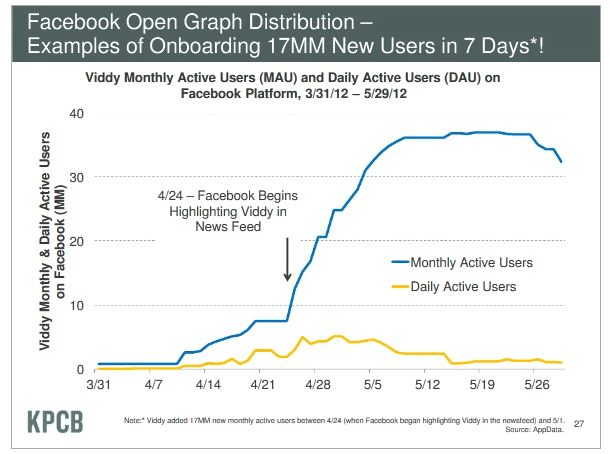
As Greylock’s Sarah Tavel pointed out in her presentation at Habit Summit this year, an increase of installs doesn’t necessarily equate to app growth (and subsequently the valuations that unicorn companies now have). Even though Viddy was coveted in the media and touted as the “Instagram of video,” it’s relative obscurity shows the pitfalls of an acquisition-only mindset. The MAUs counted when users installed and engaged initially with the app didn’t translate into DAUs and eventually led to its demise.
In hindsight it’s pretty obvious why: there was a lot of friction between a user installing the app and sharing a video for the first time. As a result, users weren’t “completing the core actions,” as Tavel mentioned.
Retention Trumps Acquisition
Tavel also talks about how an acquisition focused mindset looks good in the early stages, but over the long term retention becomes the far more important factor.
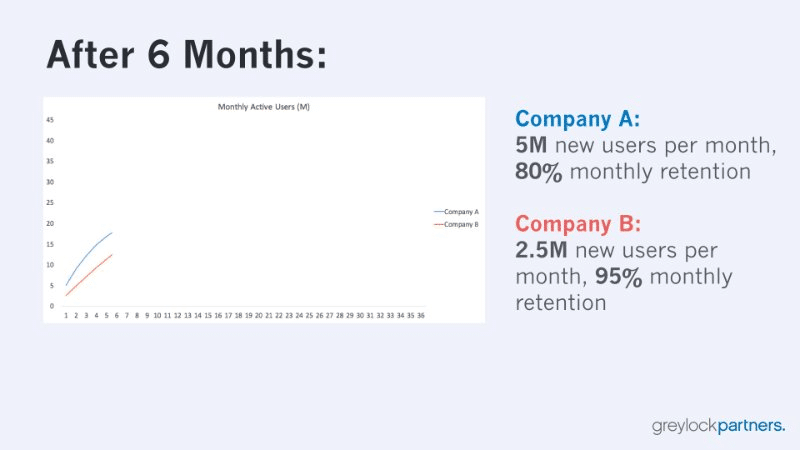
In the first 6 months after launch, a focus on acquisition rather than retention looks much more attractive than a focus on retention. Overall there are significantly more MAUs, and the effects of high retention rates haven’t kicked in yet. However, over a long period of time there’s a dramatic shift.
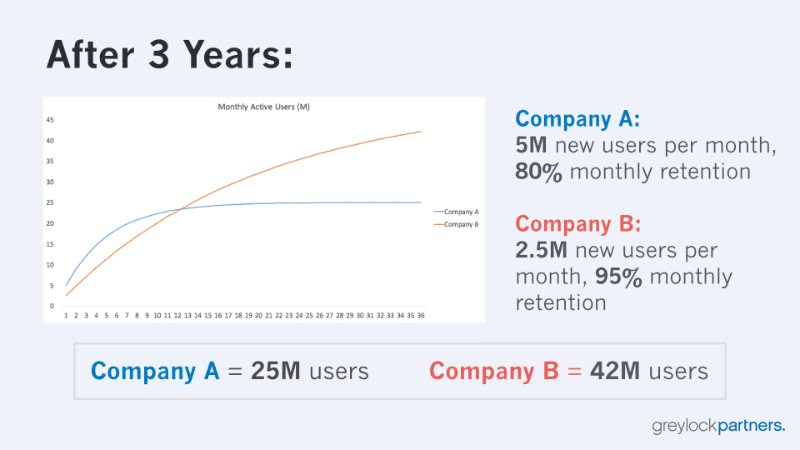
After 3 years, the opposite is true. Company B, who focused on retention but only acquired users at half the rate saw a much bigger growth in its userbase over time. Because it retained user at such a high rate, its growth rate has surged forward while company A plateaued.
Growth is a combination of user acquisition and retention, not acquisition alone. Product and marketing in conjunction are what will make your product successful, not one or the other.
The Biggest Challenge is Activating Users
Ankit Jain of SimilarWeb and Andrew Chen of Uber conducted a study that revealed some striking problems with mobile products. That is, the average app loses its users at an alarming rate soon after installation.
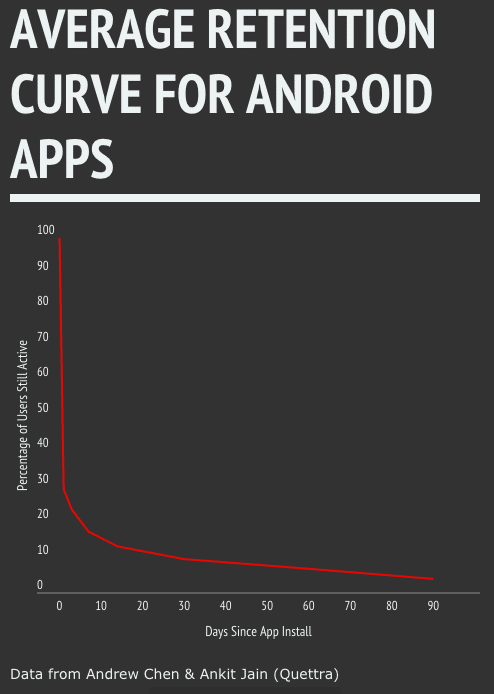
In the graph we can see that in the first 3 days, 77% of all new users are lost. By 90 days, 95% of all users in that cohort drop off. However, If we take a look at the top 10, 50, 100, and 5000 apps, we can see that while the same drop off occurs over time (the curve is the same), the day 1-3 retention is significantly higher than the average app.
“Bending the curve happens via activation, not notification spam”
-Andrew Chen
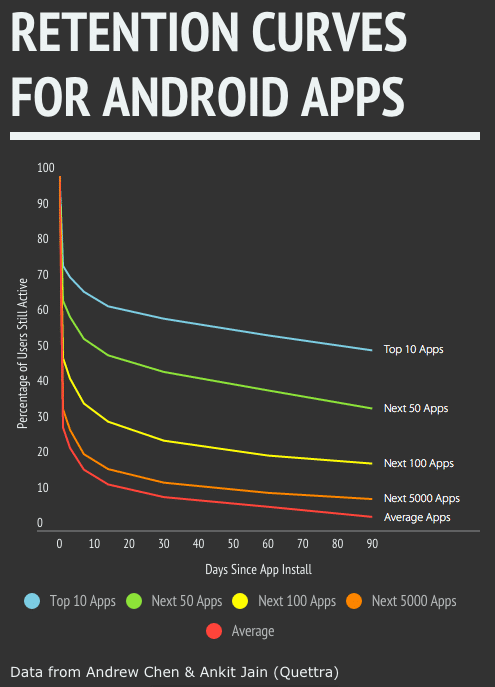
The key difference between the top apps and the average is activation. The success of your product is not based on user acquisition numbers like downloads, it’s on whether you can get them to the Aha! Moment.

The Aha! Moment is an action or set of actions that separates users who retain from those who don’t. To find out how to find your app’s Aha! Moment, sign up for our webinar where myself and Alicia Shiu from Amplitude will show you step-by-step how to do it.
Instead of focusing on trying to hack your way to the top of the app store or using push notifications to get disengaged users back, focus on driving users toward the Aha! Moment.
When users understand the value and invest in your product, they’re going to come back.
Thanks for
reading!
More articles you might be interested in:
3 Simple Features Mobile Retail Apps Use to Increase Retention
Retail sellers have an easy way to incentivize customers to download their mobile apps: offering them unique products, one-time discounts, and special offers not otherwise available to other customers. The real challenge, however, begins with building retention in mobile retail...
Read MoreWhy Fixing Week One Retention Will Save Your Mobile App
The average app hemorrhages 77% of daily active users within three days after they download it. By 30 days, this figure skyrockets to 90%. While this paints a bleak picture for mobile product managers, there’s more to the story. The...
Read MoreAutomatically Track Retention and Engagement with Apptimize
The success and failure of an A/B test doesn’t just rest on whether or not variant A caused more customers to click on a button. That’s only the simplest case. Sometimes you want to see if customers spent more time...
Read More